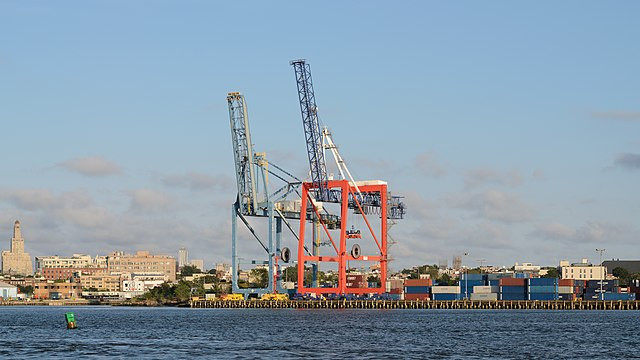As a potential strike looms at East and Gulf Coast ports, U.S. companies are scrambling to find ways to avoid significant disruptions to their supply chains. With the International Longshoremen's Association (ILA) and the United States Maritime Alliance locked in a deadlock over a new contract, businesses that rely on these key seaports are taking drastic measures. From rerouting shipments to the West Coast to utilizing costly air freight, firms are making preparations to prevent goods from being caught in the crossfire if a strike begins on October 1.
This labor impasse could have far-reaching consequences for the U.S. economy, particularly as the presidential election approaches. Kenneth Sanchez, CEO of Chesapeake Specialty Products, highlighted the growing anxiety among businesses: "This is just another headache after everything else we've been dealing with." His company, which relies heavily on the Baltimore port for international shipments, has already had to navigate disruptions earlier this year due to a bridge collapse. Now, with the possibility of a port shutdown, Sanchez is considering sending shipments to the West Coast instead. However, this is far from an ideal solution, as it adds both time and expense to his supply chain.
The ILA, representing 45,000 port workers, has been unable to reach an agreement with the Maritime Alliance, which oversees the 36 ports in question. Pay and working conditions are the primary sticking points in the negotiations. While both sides have yet to return to the negotiating table since the summer, the threat of a strike is becoming increasingly real. Should the walkout occur, it could send ripples throughout the U.S. economy, potentially adding to inflation and causing delays during a critical time for retailers gearing up for the holiday shopping season.
The timing of the potential strike could not be worse for the Biden administration. A prolonged work stoppage could disrupt the supply chain, leading to product shortages and price increases-issues that could significantly affect voter sentiment just weeks before the presidential election. Economists have warned that a strike could cost the U.S. economy up to $5 billion a day, particularly if it drags on beyond a few days. A similar situation in Canada earlier this year saw the government step in after just 17 hours of a strike to mandate binding arbitration between rail workers and their employers. It remains to be seen if President Biden, who has positioned himself as a pro-union leader, would intervene in the same way.
For now, companies are hedging their bets, moving goods ahead of the strike deadline to avoid getting caught in the logistical nightmare that could follow. Ronnie Robinson, chief supply chain officer at Designer Brands, is one such executive taking precautions. Normally, his company routes about 20% of its shoe imports through East Coast ports, but Robinson has already shifted half of those goods to the West Coast. For time-sensitive shipments, he's even resorted to air freight, paying significantly more than usual to ensure that products make it to stores on time. "People are paying whatever they can to make sure they're in the front of the queue," he said, underscoring the urgency felt by businesses nationwide.
The East and Gulf Coast ports handle a substantial portion of U.S. trade, including critical imports like auto parts and produce. Rerouting these shipments to the West Coast poses logistical challenges, particularly given the ongoing drought-related issues in the Panama Canal, a key transit route for cargo moving between coasts. Some products, like bananas and other low-value perishables, are especially vulnerable, as the cost of rerouting or flying them into the U.S. simply doesn't make financial sense. As a result, consumers could soon see price increases on everyday items if the strike materializes.
Adding to the complexity of the situation is the already strained global supply chain. Disruptions in recent years, such as the COVID-19 pandemic, the war in Ukraine, and the blockage of the Suez Canal, have made businesses more aware of how fragile supply chains can be. "We just keep seeing these black swan events," said Margaret Kidd, a program director of supply chain and logistics technology at the University of Houston. A strike at U.S. ports would only add to the growing list of disruptions that companies must navigate.
In light of these challenges, many businesses are advocating for government intervention to prevent the strike from occurring. Trade groups are pressuring the White House to take action under the 1947 Taft-Hartley Act, which allows the president to halt strikes that threaten the nation's economy. However, the Biden administration has so far refrained from stepping in, with a White House spokesperson stating, "We continue to encourage the parties to continue negotiating towards an agreement that benefits all sides and prevents any disruption."
Despite the uncertain outcome, one thing is clear: a strike at East and Gulf Coast ports would have serious repercussions for the U.S. economy, businesses, and consumers alike. As the clock ticks toward the October 1 deadline, companies are left to prepare for the worst, hoping that a resolution can be reached before the supply chain is thrown into disarray.






